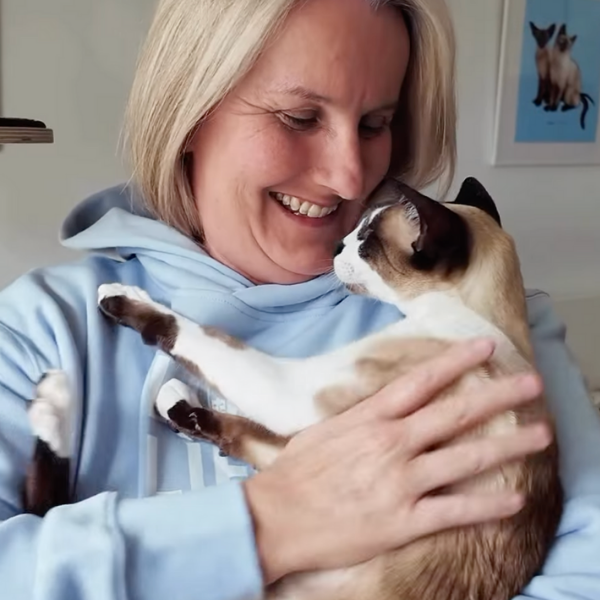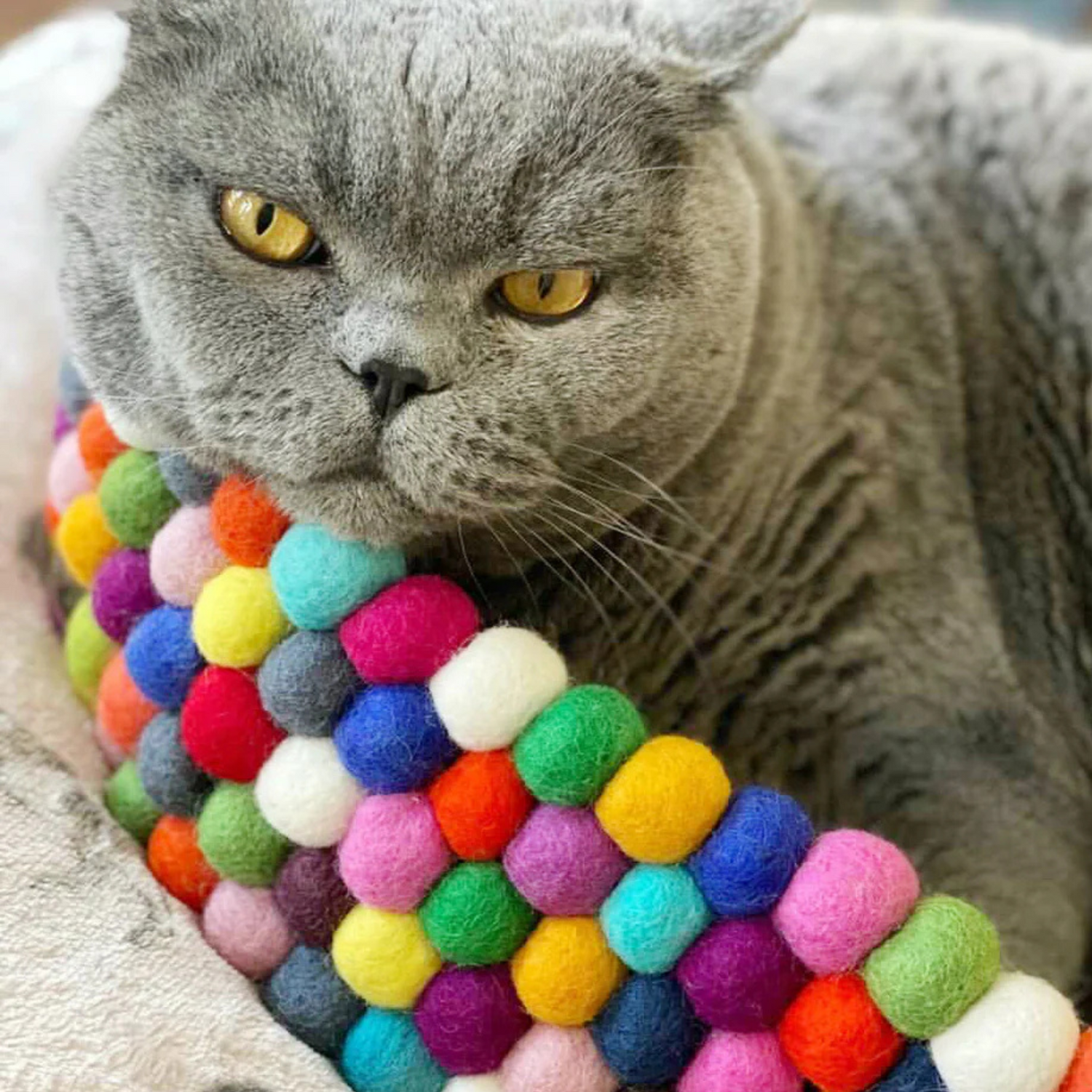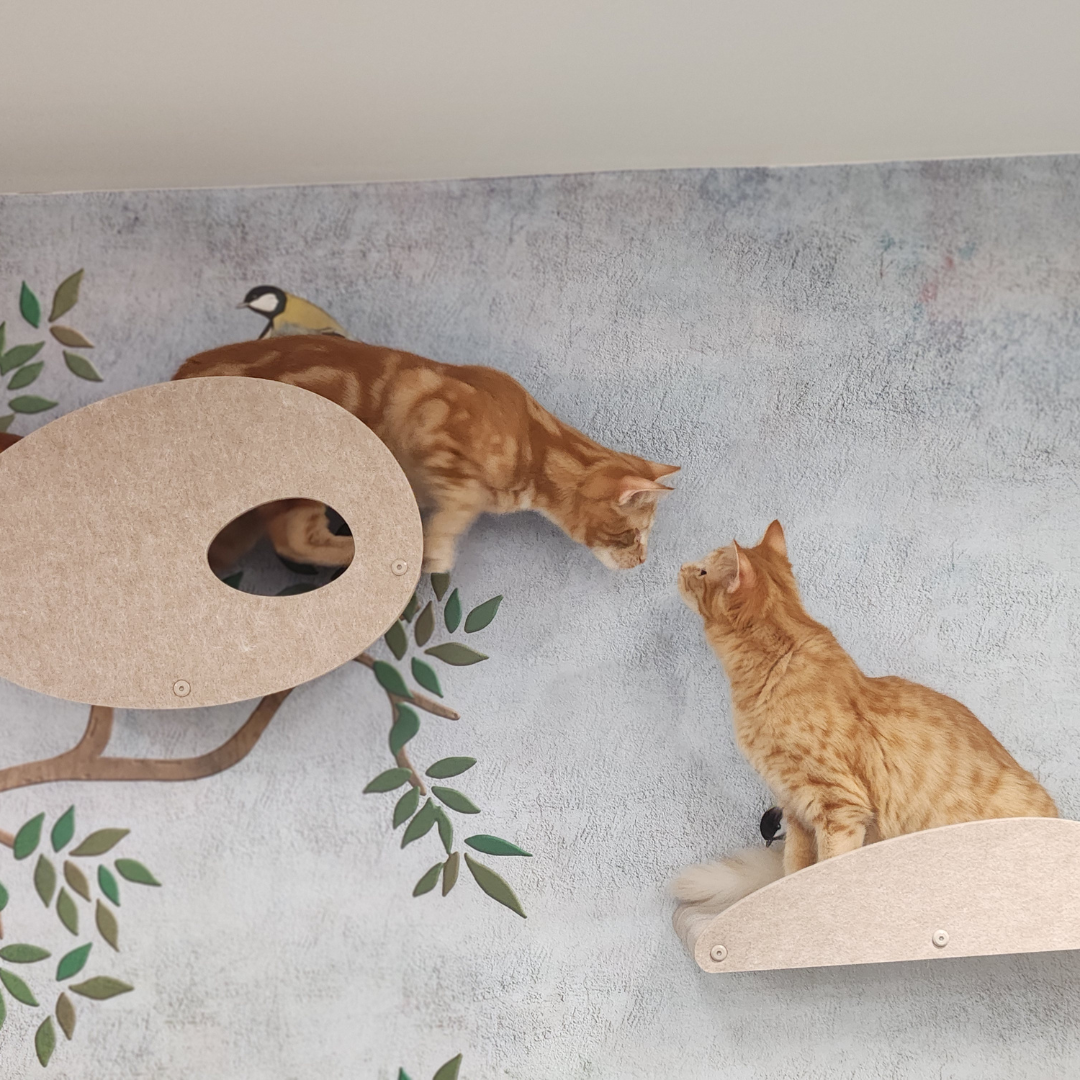Introduction
In recent years, our feline companions have been facing a growing health concern – obesity. With the trend of indoor cat living on the rise, these beloved pets are more susceptible than ever to becoming overweight. While chubby kitties may appear cute, the consequences of feline obesity can be severe, affecting their overall well-being and longevity. In this blog, we'll explore the causes and risks of overweight indoor cats and provide practical tips on how to help your feline friend shed those extra pounds through play, engagement, diet, and exercise.

Understanding the Causes of Feline Obesity
Sedentary Indoor Lifestyle
Indoor living undoubtedly provides a safe and comfortable environment for our cats. However, it often lacks the opportunities for natural activities such as hunting, climbing, and exploring that outdoor cats enjoy. Indoor cats risk becoming couch potatoes, leading to weight gain.
So why do indoor cats tend to be less active? One key factor is the lack of stimuli in the indoor environment compared to the ever-changing outdoor world. Cats are natural hunters and explorers; they may need more physical and mental stimulation when confined indoors. This can lead to boredom, overeating, and, ultimately, obesity.
Diet and Overfeeding
Another common contributor to feline obesity is diet. Many cat owners choose to free-feed their pets, leaving a bowl of kibble out all day for them to graze on. While this may seem convenient, it can lead to overeating. Cats are known for nibbling throughout the day, and without regulation, they may consume more calories than they need.
Furthermore, the quality and type of food you provide play a significant role. Cats require a balanced diet with the right amount of nutrients, proteins, and fats. Feeding your cat a calorie-dense diet or overindulging them with treats can contribute to obesity.

Age, Breed, and Genetics
Age plays a significant role in a cat's tendency to gain weight. Just like humans, cats tend to become less active as they age. Their metabolism slows down, and they can put on extra weight if their diet isn't adjusted accordingly. Additionally, some cat breeds are more prone to obesity than others, such as the British Shorthair or the Scottish Fold.
Genetics also play a role. If your cat comes from a line of overweight cats, they may have a genetic predisposition to obesity. While genetics isn't something you can change, it's crucial to be aware of it when managing your cat's weight.
Recognising the Risks and Health Implications
Diabetes Mellitus
One of the most significant risks associated with feline obesity is the development of diabetes mellitus. Obesity is a leading cause of this disease in cats. Diabetes in cats is similar to type 2 diabetes in humans and can lead to serious health issues.
Cats with diabetes require careful management of their blood sugar levels, which often involves insulin injections and a strict diet. Without proper management, diabetes can lead to complications like ketoacidosis, cataracts, and neuropathy.
Joint Problems
Excess weight puts a strain on a cat's joints. The additional pressure on their joints can lead to arthritis, a painful condition that affects their mobility. Cats suffering from arthritis may become less active and reluctant to play or jump, further exacerbating the weight problem.
Arthritis is challenging to manage in cats, and the primary focus is pain relief and maintaining joint health. Helping your cat lose weight can significantly improve their arthritis symptoms and overall quality of life.
Heart and Respiratory Issues
Obesity doesn't just affect a cat's joints; it can also severely impact their cardiovascular and respiratory systems. Extra body fat can stress the heart, leading to hypertension (high blood pressure) and heart disease.
Additionally, obese cats may struggle with respiratory problems. The excess fat can press on their chest and lungs, making it harder for them to breathe comfortably. This can result in laboured breathing and decreased activity levels.
Crafting a Weight Loss Plan for Your Cat
Consult Your Vet
Before embarking on any weight loss journey with your cat, it's crucial to consult your veterinarian. Your vet will assess your cat's overall health, determine their ideal weight, and create a personalized weight loss plan. They may also rule out any underlying medical conditions contributing to your cat's weight problem.

Creating a Safe Play Environment
Interactive toys are an excellent way to engage your cat and encourage physical activity. Toys like feather wands, laser pointers, and puzzle feeders can pique your cat's interest and get them moving. Spend time playing with your cat each day to keep them active and mentally stimulated.
Consider designing a stimulating play area within your home. Install cat shelves at various heights, providing opportunities for climbing and exploration. Cats love vertical space, and it's an effective way to keep them engaged.

The Right Diet
A balanced and calorie-controlled diet is the cornerstone of any weight loss plan for your cat. Your veterinarian will recommend high-quality, weight-management cat food to help your cat shed pounds safely.
Rather than free-feeding, switch to scheduled meals to control portion sizes. Divide your cat's daily food allowance into several small meals throughout the day. This can help prevent overeating and keep your cat's metabolism active.
Exercise Regimen
Exercise is a crucial component of your cat's weight loss plan. As you introduce more playtime into their routine, gradually increase the duration and intensity of the sessions. Be patient; some cats may need time to build up their stamina.
Incorporate activities that mimic hunting and stalking, such as interactive toys and feather wands. Cats are more likely to engage in play that taps into their natural instincts.
Monitoring Progress and Adjusting the Plan

Regular Vet Check-ups
Throughout your cat's weight loss journey, regular vet check-ups are essential. Your vet will monitor their progress, adjust the plan as needed, and address any health concerns that may arise during the process. These check-ups are crucial for ensuring your cat's safety and well-being.
Tracking Weight and Measurements
Keep a record of your cat's weight and measurements to gauge their progress. Monitor changes in their body condition and adjust their food and exercise regimen accordingly. Celebrate small victories along the way, and don't be discouraged by occasional setbacks.
Staying Committed and Patient
Helping your cat lose weight is a long-term commitment that requires patience and dedication. Weight loss may be gradual, and every cat's journey is unique. Stay motivated by focusing on the positive impact on your cat's health and happiness.
Conclusion
Overweight indoor cats face several health risks, including diabetes, joint problems, and heart issues. Recognising the causes and consequences of feline obesity is the first step toward helping your beloved feline friend achieve a healthier weight.
With the guidance of your veterinarian, you can create a weight loss plan tailored to your cat's needs. This plan may include a balanced diet, increased physical activity, and regular monitoring. Through dedication and patience, you can provide your cat with the opportunity to lead a healthier, more active, and happier life.
Remember, your cat relies on you for their well-being. By addressing their weight issue and implementing a comprehensive weight loss plan, you're extending their life and enhancing their quality of life. Your cat will thank you with purrs, playfulness, and a lifetime of companionship.





